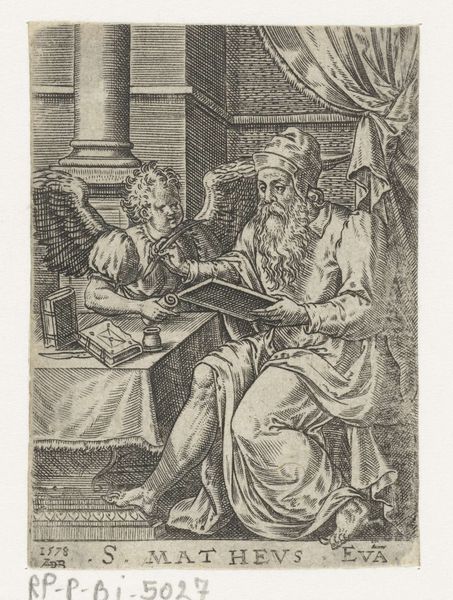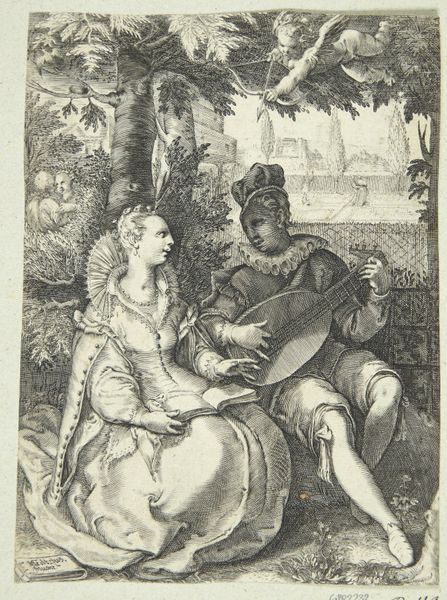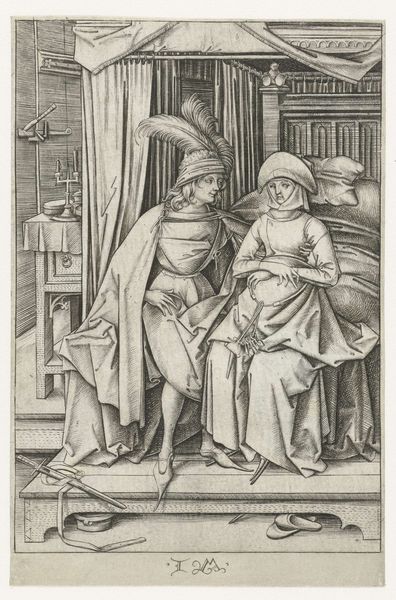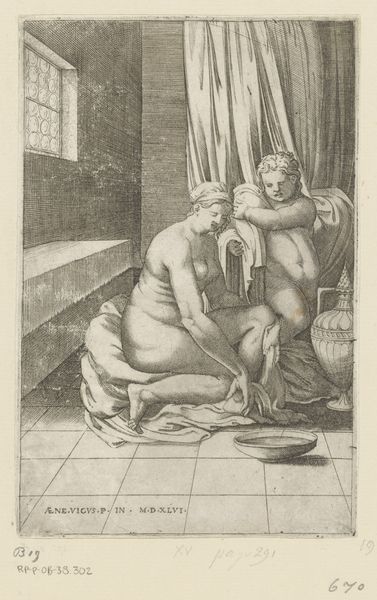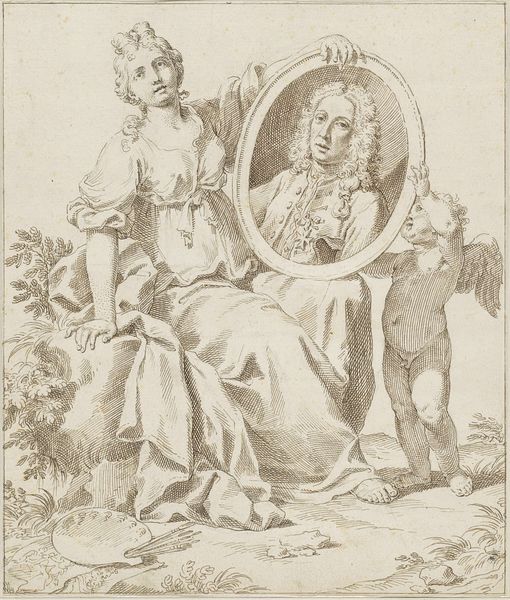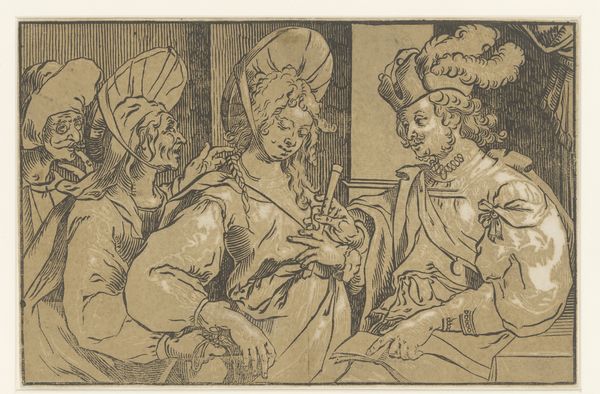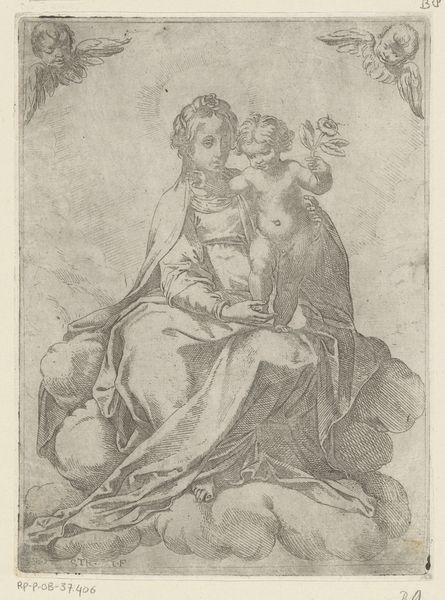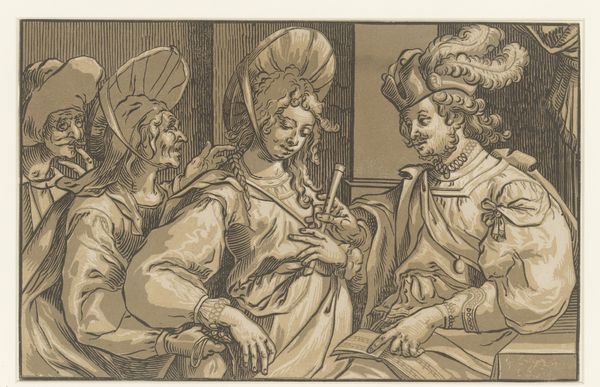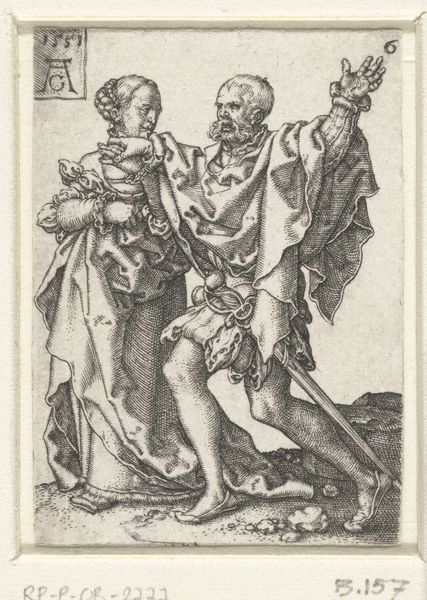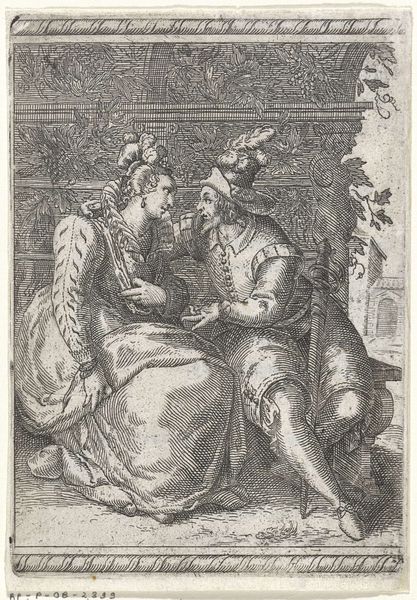
drawing, print, engraving
#
drawing
#
medieval
# print
#
figuration
#
history-painting
#
northern-renaissance
#
engraving
Dimensions: Sheet: 6 7/16 × 3 15/16 in. (16.4 × 10 cm)
Copyright: Public Domain
Curator: Israhel van Meckenem's engraving, "The Lovers," created between 1450 and 1503, presents us with an intimate domestic scene from the late medieval period. Editor: The quiet intensity of this piece strikes me first. Despite the close proximity of the couple, there's a palpable sense of restraint, almost sadness in their downcast eyes. Curator: The very act of capturing an image of private life, particularly one involving intimacy, suggests evolving social and cultural values around relationships and the burgeoning recognition of individuality. I wonder, what broader narratives can we discern regarding gender and representation in this era? Editor: From my perspective, this is more than a simple portrayal of lovers. Observe the subtle details, like the blossoming plant which implies fecundity. I see echoes of marriage iconography within Northern Renaissance art; it symbolizes commitment. The foot washing vessel has purifying connotations and renewal. Curator: Considering that we know little about Van Meckenem's life, speculation abounds if his engravings such as this were intended to instruct as to how a bourgeois couple should represent themselves, perhaps even signaling aspirations for social mobility at the cusp of modernity? This poses broader questions of how artistic license operates within and is influenced by socio-economic factors. Editor: Yes, but let’s not lose sight of the emotional language embedded here! The tenderness of the hand-holding and downcast gazes communicate yearning, perhaps an anxiety tied to earthly concerns about duty or social pressures. There is a visual grammar that communicates universal longing for connection. Curator: That desire for connection resonates today because it challenges conventional narratives of pre-modern gender roles, implying potential female agency at odds with prevailing views about the subjugation of women. This resonates powerfully when seen in conjunction with feminist theories about gender and subjectivity. Editor: Regardless of their socioeconomic reality, though, look at this picture with compassion. We see our shared human needs, rendered with striking detail that goes beyond the time it was created. It evokes something timeless. Curator: Indeed. By grappling with how works like "The Lovers" navigate individual agency versus societal expectations, we engage in crucial conversations about how these historical threads resonate in shaping the ongoing complexities of our social fabric. Editor: By paying close attention to these interwoven cultural symbols, we understand and celebrate love beyond language – spanning historical moments, uniting humankind with threads that weave past, present, and future as one grand tapestry of human sentiment.
Comments
No comments
Be the first to comment and join the conversation on the ultimate creative platform.

